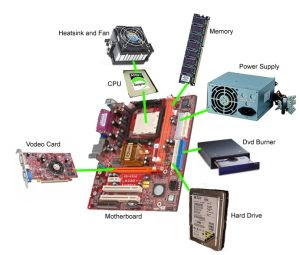Check out the Windows 7 Control Panel Walkthrough series
 As you know, the Control Panel in Microsoft Windows 7 is the central location for all your operating system configuration needs. There, you will find 45 individual tools that will allow you to configure and control just about every aspect of Windows 7.
As you know, the Control Panel in Microsoft Windows 7 is the central location for all your operating system configuration needs. There, you will find 45 individual tools that will allow you to configure and control just about every aspect of Windows 7.
When you launch it, you’ll discover that the default display for the Control Panel is the Category view and that there are eight categories. You can display the Control Panel in either a large or a small icon view, but either choice shows icons for each of the 45 tools.
Because the Control Panel has so many tools, Microsoft added a Search box to make it easy for you to find the tool that you need for a particular task. Chances are, more often than not, you’ll want to use the Search box when you need to find a specific tool.
To help you become familiar with all the tools that are available in Windows 7’s Control Panel, here is the Windows 7 Control Panel Walkthrough Photo Gallery series, in which you are shown every tool in each of the Control Panel categories. A brief overview of what each tool does.
To further help you become familiar with all the tools in the Windows 7 Control Panel, each Gallery contains a tree diagram that shows a map of the tools presented in the walkthrough.
Each of the Windows 7 Control Panel Walkthroughs in this series exists as a TechRepublic Photo Gallery on the TechRepublic site.
- System and Security Category
 The System and Security category is the first one in the Control Panel and contains all the tools that you’ll use to perform system, administrative, and security-related tasks.
The System and Security category is the first one in the Control Panel and contains all the tools that you’ll use to perform system, administrative, and security-related tasks. - Network and Internet Category
 The Network and Internet category is the second one in the Control Panel and contains all the tools that you’ll use to check the status of the network, change settings, set preferences for sharing files and computers, configure Internet connections, and much more.
The Network and Internet category is the second one in the Control Panel and contains all the tools that you’ll use to check the status of the network, change settings, set preferences for sharing files and computers, configure Internet connections, and much more. - Hardware and Sound Category
 The Hardware and Sound category is the third one in the Control Panel and contains all the tools that you’ll use to add and remove printers and other hardware, change system sounds, configure AutoPlay, manage power, update drivers, and more.
The Hardware and Sound category is the third one in the Control Panel and contains all the tools that you’ll use to add and remove printers and other hardware, change system sounds, configure AutoPlay, manage power, update drivers, and more. - Programs Category
 The Programs category is the fourth one in the Control Panel and contains all the tools that you’ll use to uninstall programs or Windows features, manage gadgets, and more.
The Programs category is the fourth one in the Control Panel and contains all the tools that you’ll use to uninstall programs or Windows features, manage gadgets, and more. - User Accounts and Family Safety Category
 The User Accounts and Family Safety category is the fifth one in the Control Panel and contains all the tools that you’ll use to change user account settings and passwords, set up parental controls, manage credentials, and more.
The User Accounts and Family Safety category is the fifth one in the Control Panel and contains all the tools that you’ll use to change user account settings and passwords, set up parental controls, manage credentials, and more. - Appearance and Personalization Category
 The Appearance and Personalization category is the sixth one in the Control Panel and contains all the tools that you’ll use to change the appearance of desktop items, apply various desktop themes and screen savers, customize the Start menu or Taskbar, and more.
The Appearance and Personalization category is the sixth one in the Control Panel and contains all the tools that you’ll use to change the appearance of desktop items, apply various desktop themes and screen savers, customize the Start menu or Taskbar, and more. - Clock, Language, and Region Category
 The Clock, Language, and Region category is the seventh one in the Control Panel and contains all the tools that you’ll use to change date, time, language, numbers, currency, and more.
The Clock, Language, and Region category is the seventh one in the Control Panel and contains all the tools that you’ll use to change date, time, language, numbers, currency, and more. - Ease of Access Category
 The Ease of Access category is the eighth one in the Control Panel and contains all the tools that you’ll use to adjust your computer settings for vision, hearing, and mobility as well as configure speech recognition to control your computer with voice commands.
The Ease of Access category is the eighth one in the Control Panel and contains all the tools that you’ll use to adjust your computer settings for vision, hearing, and mobility as well as configure speech recognition to control your computer with voice commands.







